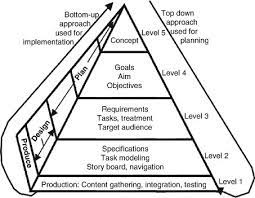The Art of Multimedia Production
Multimedia production is a dynamic and creative process that involves the integration of various forms of media to convey a message or tell a story. From videos and animations to graphics and audio, multimedia production encompasses a wide range of elements that come together to create engaging and interactive experiences.
The Components of Multimedia Production
At the heart of multimedia production are visual and auditory elements that work in harmony to captivate audiences. Video production involves filming, editing, and post-production techniques to create compelling visual narratives. Animation adds a touch of magic through motion graphics and character animation.
Graphics play a crucial role in multimedia production, enhancing visual appeal and conveying information effectively. Whether it’s illustrations, infographics, or interface designs, graphics bring life to digital content. Audio production completes the experience with sound effects, music, and voiceovers that immerse viewers in the multimedia world.
The Process of Multimedia Production
From concept development to final delivery, multimedia production follows a structured process that involves planning, creation, and refinement. The pre-production phase includes brainstorming ideas, storyboarding concepts, and outlining project requirements.
Production involves bringing ideas to life through filming, animation creation, graphic design, and audio recording. Post-production focuses on editing raw materials, adding effects, refining details, and ensuring seamless integration of all elements.
The Impact of Multimedia Production
Multimedia production has revolutionised communication by offering engaging ways to convey information and evoke emotions. From marketing campaigns and educational materials to entertainment experiences and virtual tours, multimedia production has transformed how we interact with digital content.
By combining visuals with sound in interactive formats, multimedia production creates immersive experiences that resonate with audiences on a deeper level. It bridges the gap between creativity and technology, opening new possibilities for storytelling across various industries.
Five Essential Tips for Successful Multimedia Production: Planning, Equipment, and Audience Engagement
- Plan your project thoroughly before starting.
- Use high-quality equipment for better results.
- Pay attention to lighting and sound quality.
- Edit your content carefully to enhance its impact.
- Consider the audience you are targeting when creating multimedia.
Plan your project thoroughly before starting.
Planning your project thoroughly before starting is a crucial tip in multimedia production. By outlining your objectives, identifying resources, and establishing timelines at the outset, you set a solid foundation for success. A well-thought-out plan helps streamline the production process, minimises risks of delays or budget overruns, and ensures that all team members are aligned on the project’s goals. Effective planning allows for better creativity, problem-solving, and overall efficiency throughout the multimedia production journey.
Use high-quality equipment for better results.
When engaging in multimedia production, it is essential to utilise high-quality equipment to achieve superior results. Investing in top-notch cameras, microphones, editing software, and other tools can significantly enhance the overall quality of your content. High-quality equipment not only ensures clearer visuals and crisper audio but also allows for greater creative flexibility and control during the production process. By prioritising the use of premium equipment, you can elevate the professionalism and impact of your multimedia projects, ultimately leading to more engaging and compelling end products.
Pay attention to lighting and sound quality.
In the realm of multimedia production, paying meticulous attention to lighting and sound quality is paramount. Proper lighting can enhance the visual appeal of videos and graphics, setting the mood and highlighting key elements. Similarly, high-quality sound ensures clear communication and an immersive experience for viewers. By prioritising lighting and sound quality in multimedia production, creators can elevate the overall impact of their content, captivating audiences and conveying messages effectively.
Edit your content carefully to enhance its impact.
Editing your content carefully is a crucial tip in multimedia production that can significantly enhance its impact. By refining and fine-tuning your visuals, audio, and overall presentation, you can ensure that your message is clear, engaging, and memorable. Paying attention to details such as pacing, transitions, colour correction, audio levels, and overall coherence can elevate the quality of your multimedia project and leave a lasting impression on your audience. Effective editing not only improves the aesthetics of your content but also helps convey your message effectively, making it a key step in creating impactful multimedia productions.
Consider the audience you are targeting when creating multimedia.
When delving into the realm of multimedia production, it is essential to carefully consider the audience you are targeting. Understanding the preferences, interests, and expectations of your audience plays a pivotal role in shaping the content and style of your multimedia projects. By tailoring your creations to resonate with your target audience, you can enhance engagement, foster connection, and deliver a more impactful message. Whether it’s adjusting visual aesthetics, incorporating relevant themes, or choosing appropriate audio elements, keeping your audience at the forefront of your creative process is key to crafting compelling and effective multimedia experiences.

